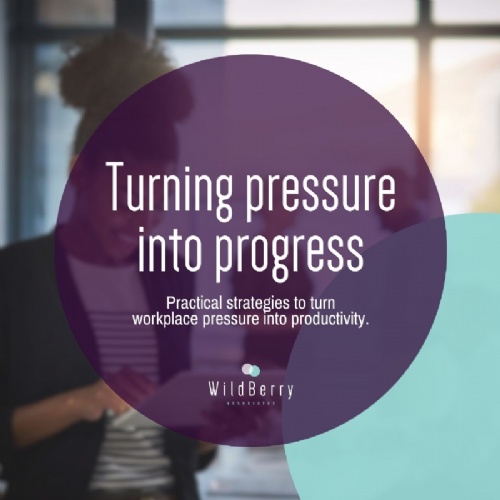Turning pressure into progress

Stress is often framed as the enemy of productivity, but what if we looked at it differently? Rather than something to be avoided, stress can be a powerful motivator when managed effectively, pushing us to perform at our best.
In fast-paced professional environments like London’s office and corporate sectors, stress is common. The key is learning how to channel it into progress without letting it become overwhelming.
For Stress Awareness Month, we’re looking at stress differently, and instead of seeing it as the enemy, we’re exploring practical strategies to turn workplace pressure into productivity.
The good vs the bad
For many, stress is a solely negative feeling that can cause serious poor mental health. There are, however, two types of stress; good and bad.
Eustress (good stress) is the kind that drives you to meet deadlines or stay focused during a challenging task. It sharpens your focus and boosts performance.
Distress (bad stress) is the overwhelming, anxiety-inducing type of stress that can lead to burnout, procrastination, and decreased productivity.
Using stress as a performance booster
Stress doesn’t have to be paralysing, it can instead be used as a tool for high performance when approached strategically. Here are some ways in which you can use stress constructively:
Reframe your mindset
Instead of seeing stress as a problem, view it as a sign that something matters to you. A little pressure before a big interview or a client meeting means you care about the outcome. This shift in thinking helps you embrace the challenge rather than fear it.
Set clear, actionable goals
Overwhelm often comes from a lack of direction. Break tasks into smaller, manageable steps so stress fuels progress rather than paralysing you, causing you to procrastinate.
Time management strategies
When stress builds, it’s easy to jump from one task to another without making real progress. Leverage time-blocking to dedicate specific time slots for each activity.
Manage stress with micro-breaks and breathing techniques
Instead of trying to power through stress, embrace short, structured breaks. Techniques like the 4-7-8 breathing method or a five-minute walk can help reset your brain, keeping stress levels manageable while maintaining momentum.
The urgent-important matrix
Use Eisenhower’s urgent-important matrix to categorise tasks and prevent stress overload. Focus on what’s urgent and important first, delegate where possible, and eliminate unnecessary tasks that create stress without adding value.
Stress isn’t just a short-term motivator, it plays a role in long-term career growth. Learning to manage stress effectively builds resilience, a highly valuable skill in today’s competitive job market. Employers and hiring managers look for candidates who can handle pressure without crumbling.
The goal isn’t to eliminate stress; that’s almost impossible, it’s to manage it in a way that helps you succeed. By understanding the difference between good and bad stress, using structured techniques to channel pressure, and developing resilience, you can turn workplace stress into a stepping stone for progress rather than a roadblock to success.
